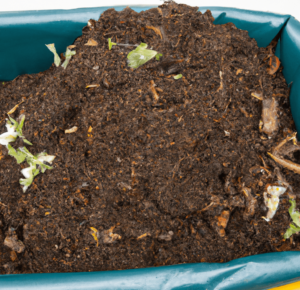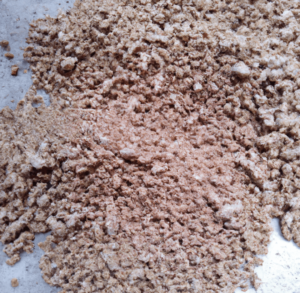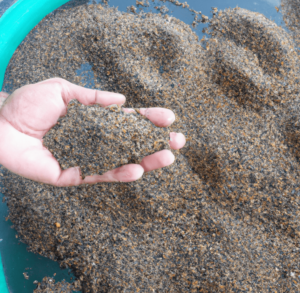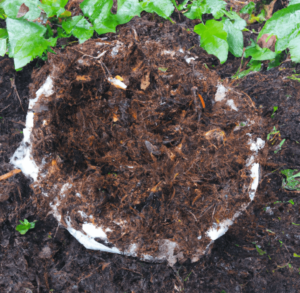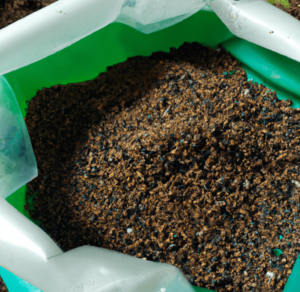They produce food, oxygen, and other essential substances that keep life on our planet going, plants are essential parts of our ecosystem. Essential nutrients and minerals that are frequently present in the soil but not easily absorbable are necessary for plants to thrive. This is where mycorrhizae enter the picture because these fungi partnerships are essential for plant development and fertilization. Let’s look at the role of mycorrhizae in plant growth and fertilization.
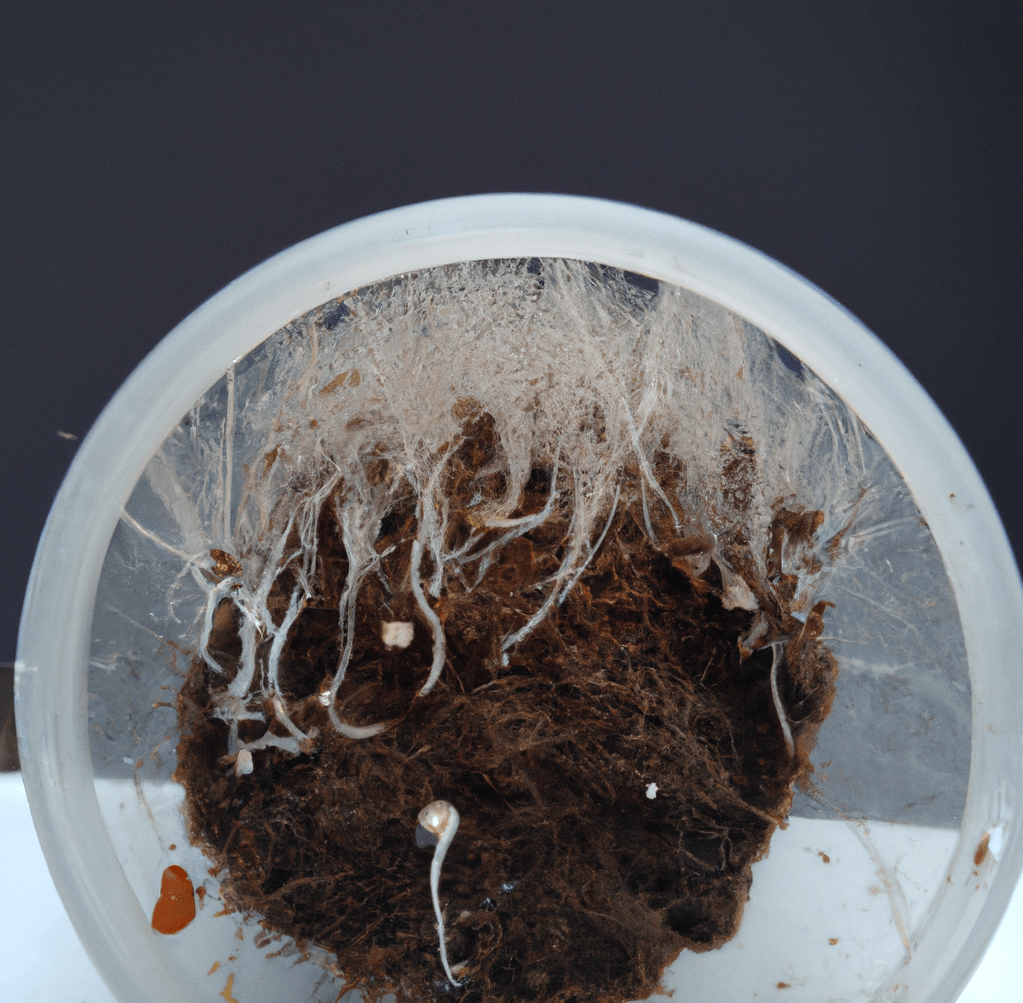
What are Mycorrhizae?
Symbiotic relationships between fungi and plant roots are known as mycorrhizae. The two species can exchange vital nutrients and minerals because of this relationship. The surface area accessible for nitrogen uptake is increased by the fungal hyphae that extend into the surrounding soil beyond the plant roots. In return, the plant gives the fungus photosynthesis-produced carbohydrates. The role of mycorrhizae in plant growth and fertilization. makes sure both the plant and the fungus gain from this interaction.
Mycorrhizae are crucial for plant growth because they enable plants to overcome soil nutrient deficiencies. Mycorrhizae help plants develop more effective and yield more by boosting nutrient intake. Mycorrhizae can also increase a plant’s resistance to environmental stresses like disease and drought. Only certain types of soil can support mycorrhizae formation.
The role of mycorrhizae in plant growth and fertilization can be influenced by a number of factors, including the soil’s pH, moisture content, and organic matter concentration. Below-5.5 pH soil can prevent mycorrhizal growth, while too wet or dry soil can be harmful to mycorrhizal connections. Additionally, nitrogen levels in soil with low levels of organic matter may not be sufficient to enable the development of mycorrhizae. In the middle of the 19th century, botanists found that some plant roots had a fungus layer and this led them to discover mycorrhizae. Mycorrhizae weren’t understood to be a significant factor in plant growth until the 1960s, though. Since then, a great deal of research has been done to learn more about the mechanisms underlying mycorrhizal connections and how they affect plant growth.
Types of Mycorrhizae and Their Functions
Mycorrhizae are symbiotic relationships between fungi and plant roots that are crucial to the growth and survival of plants in a variety of environmental circumstances. Arbuscular mycorrhizae (AM), ectomycorrhizae (ECM), ericoid mycorrhizae (ERM), and orchid mycorrhizae are a few of the several forms of mycorrhizae. Let’s understand these and the role of mycorrhizae in plant growth and fertilization:
- The most prevalent type of mycorrhizae, known as arbuscular mycorrhizae (AM), is associates with the majority of plant species. They facilitate nutrient uptake, especially phosphorus, and encourage plant development in resource-restricted environments.
- Ectomycorrhizae (ECM) develop sheaths around the roots of plants, increasing nutrient intake and enhancing tolerance to environmental challenges like drought, salinity, and heavy metals. Ectomycorrhizae are primarily found in woody plants.
- Heathlands are home to ericoid mycorrhizae (ERM), which associate with plants that are adapted to acidic soils and enhance the nutrient intake of nitrogen and phosphate. The germination and growth of orchid seeds depend on specialized mycorrhizae that are unique to orchids.
Ectomycorrhizae
Instead of entering into the root tissue like other mycorrhizal connections, ectomycorrhizae develop a sheath around the surface of plant roots. This sheath is frequently discernible on the roots of plants that form ectomycorrhizae connections as a white or gray coating. For woody plants like trees and shrubs as well as some crops like grapes and berries, ectomycorrhizae connections are crucial. The role of mycorrhizae in plant growth and fertilization is important n order to promote nutrient intake and sustain growth, these plants often grow in nutrient-poor soils. The development and establishment of ectomycorrhizae partnerships depend on the health of the soil.
The growth and diversity of ectomycorrhizae fungus can be impacted, in particular, by the pH and availability of organic matter in the soil. Additionally, in temperate climes where woody plants are more prominent, ectomycorrhizae tend to be more widespread. Associations with ectomycorrhizae can significantly affect crop growth and productivity. For instance, research has revealed that ectomycorrhizae-associated grapevines yield more and are more resilient to environmental stress than grapevines without these relationships. Similarly, it has been demonstrated that trees with ectomycorrhizae relationships grow faster and generate more wood than those without these associations.
Endomycorrhizae
Mycorrhizae that develop linkages between fungus hyphae and the host plant’s root cells are known as endomycorrhizae. The most prevalent kind of mycorrhiza found in terrestrial ecosystems is this one, commonly known as arbuscular mycorrhiza (AM). The arbuscules and vesicles that the endomycorrhizal fungi create after penetrating the plant roots’ cell walls help the plant and the fungus exchange nutrients and carbon.
The role of mycorrhizae in plant growth and fertilization boosts plant development and resilience to environmental challenges including disease and drought. It also increases nutrient uptake, particularly of phosphorus. The roots of a variety of plants, including grasses, trees, and crops, contain endomycorrhizae. This kind of mycorrhiza can be crucial for the development of plants in nutrient-poor soils and other situations by facilitating the intake of vital nutrients.
Arbuscular Mycorrhizae
The mycorrhizal association known as arbuscular mycorrhizae (AM) develops inside the roots of plants. For herbaceous plants like grasses, legumes, and numerous crops, these relationships are particularly crucial. In contrast to ectomycorrhizae, which create a visible sheath on the outside of plant roots, arbuscular mycorrhizae are formed by fungus from the phylum Glomeromycota. Rather, the fungus’s hyphae enter the plant’s root and create complex networks within the root cells.
Arbuscules are the name for these networks, which increase the amount of root surface that can absorb nutrients. AM connections are crucial for plant development because they enhance the uptake of vital nutrients like phosphorus and nitrogen, which are frequently in short supply in the soil. AM can also increase a plant’s tolerance to environmental stresses like disease and drought.
The role of mycorrhizae in plant growth and fertilization and AM relationships depends on the soil conditions. The development and diversity of AM fungus can be influenced by a variety of factors, including soil moisture, pH, and the availability of organic materials. Identifying these crops might be crucial for maximizing plant development and output because some crops might benefit more from AM connections than others.
According to studies, crops with AM connections can grow and produce more than crops without these links. For instance, it has been demonstrated that soybean plants with AM connections yield more and are more resilient to environmental stress than those without these links. Compared to plants without AM linkages, maize plants with AM associations have been demonstrated to have better nutrient absorption and growth.
Ericoid Mycorrhizae
A relationship between the fungal hyphae and the roots of plants adapted to acidic soils, such as heaths, moors, and tundras, is called an ericoid mycorrhiza (ERM). In contrast to the more popular endomycorrhizae and ectomycorrhizae, ERM relationships have a different type of fungus involved and a more specific structure. In ERM relationships, the fungus partner frequently belongs to the Ascomycota, which includes the genera Rhizoscyphus and Erica. The host plant’s root cells are penetrated by the fungus’ hyphae, which create a thick network of intercellular hyphae that improves the intake of nutrients, especially nitrogen and phosphorus.
By assisting the uptake of nutrients from acidic and nutrient-limited soils, ericoid mycorrhizae are crucial for the establishment and growth of many heathland plants, including heather, blueberries, and cranberries. The fungus that participates in ERM connections is crucial for soil nutrient cycling and carbon sequestration, supporting the health and stability of the ecosystem. This is just one part of the role of mycorrhizae in plant growth and fertilization.
Orchid Mycorrhizae
The plant family Orchidaceae only has a particular variety of mycorrhizal connection known as orchid mycorrhizae. In contrast to most plants, which only form ectomycorrhizal or arbuscular mycorrhizal connections, orchids create mycorrhizal relationships with a variety of fungi. The mycorrhizal fungi give the orchid plants vital nutrients like carbon, nitrogen, and phosphorus. In return, the fungi receive a source of carbohydrates from the orchid plants.
Given that orchid plants frequently grow in nutrient-deficient soils, the mycorrhizal connection is essential for their development and survival. Depending on the kind of orchid and the growing environment, the content and composition of the mycorrhizal fungi connected to orchids might change. While others create affiliations with Basidiomycota or Mucoromycotina, some orchids form associations with Ascomycota fungus.
The role of mycorrhizae in plant growth and fertilization between orchids and fungi can be quite specialized, with certain orchid species only forming associations with a single fungus species, according to studies in orchid botany. Due to the vulnerability of these delicate relationships to environmental changes, this peculiarity has significant implications for the management and conservation of orchid populations.
The Benefits of Mycorrhizae in Plant Growth and Fertilization
Just like there are benefits of using seaweed as a fertilizer, the role of mycorrhizae in plant growth and fertilization is important too:
- By expanding the surface area of the plant roots, mycorrhizae improve nutrient uptake by enabling the acquisition of nutrients like phosphorus, nitrogen, and other micronutrients from the soil.
- In mycorrhizal connections, the fungus partner also enhances soil structure by encouraging soil aggregation and water retention, which lowers soil erosion and improves nutrient cycling.
- In soils with a restricted supply of nutrients, like those present in many agricultural systems, mycorrhizae are particularly helpful. Mycorrhizal inoculants have been demonstrated to improve plant quality, increase crop output, and decrease the need for chemical fertilizers, all of which support sustainable agriculture.
- Mycorrhizal linkages increase plants’ ability to withstand environmental challenges including drought, salt, and heavy metal toxicity, aiding in plant survival and adaptation.
Improved Nutrient Uptake
The role of mycorrhizae in plant growth and fertilization includes the fact that plant roots can get vital nutrients, such as phosphorus, nitrogen, and other micronutrients, which are frequently scarce in the soil, by creating relationships with fungi. Arbuscular mycorrhizal (AM) connections in particular have been demonstrated to enhance nitrogen uptake in a number of plant species. The complicated networks that the fungal hyphae create inside the root cells after penetrating the plant root increase the surface area of the root that can absorb nutrients.
The formation of mycorrhizal associations and the availability of nutrients can both be significantly influenced by the conditions of the soil. The growth and diversity of mycorrhizal fungi can be influenced by the pH of the soil, the amount of moisture in the soil, and the availability of organic materials. In order to maximize the advantages of mycorrhizal connections, it’s important to understand these soil characteristics and how they affect plant growth.
Mycorrhizal relationships can have significant environmental advantages in addition to improved nutrient intake. Plants can decrease their reliance on chemical fertilizers, which can have detrimental effects on the environment, by increasing the efficiency of nutrient uptake. Further lowering the requirement for chemical inputs, mycorrhizal connections can enhance plant resilience to environmental stressors like disease and drought.
Enhanced Water Uptake
The role of mycorrhizae in plant growth and fertilization is known to increase the intake of water by plants which are also why gardeners use vermicompost as a fertilizer. Mycorrhizae expand the roots’ surface area, giving plants easier access to the soil’s water and nutrients. The network of fungal hyphae that forms outside of the root system efficiently increases the plant’s ability to absorb water. Mycorrhizae can also strengthen soil structure, improving water retention and lowering soil erosion, which further aids in improving water uptake.
Crops produced in locations with low water availability can benefit greatly from the presence of mycorrhizae. Under these circumstances, mycorrhizae can boost crop growth and output by encouraging more effective water usage, which enables plants to continue growing even when water is scarce. It’s been demonstrated that mycorrhizae improve the efficiency of crop water usage in a number of crops, including wheat, maize, and sorghum.
Moreover, by enhancing the plant’s water interactions, mycorrhizae can help plants tolerate environmental challenges like drought. Mycorrhizae can help a plant retain water during a drought by maintaining turgor pressure, reducing wilting, and eventually assisting in plant survival.
Increased Plant Growth and Yield
By enhancing nutrient intake and encouraging root growth, the role of mycorrhizae in plant growth and fertilization can greatly increase plant growth and productivity. Plant roots can get vital nutrients, such as phosphorus, nitrogen, and other micronutrients, which are frequently scarce in the soil, by creating relationships with fungi.
Mycorrhizal connections can also encourage root development, enabling plants to explore more soil and gain access to more nutrients and water. This could enhance the plant’s general well-being, production, and yield. Mycorrhizal partnerships have been found to significantly improve plant growth and yield in a number of crops, including maize, wheat, soybeans, and tomatoes, according to studies. The increase in yield has occasionally reached 30% to 40%.
The potential of mycorrhizal connections to enhance nitrogen uptake and plant growth without the use of artificial fertilizers is one of its most significant features. This lowers the price of agricultural production while simultaneously lowering the harmful effects of chemical fertilizers on the environment. The kind of mycorrhizal connection, the species of crop, and the environmental circumstances are only a few of the variables that might affect the benefits of mycorrhizal associations. For instance, some plants form ectomycorrhizal connections largely, whilst other plants form arbuscular mycorrhizal associations primarily.
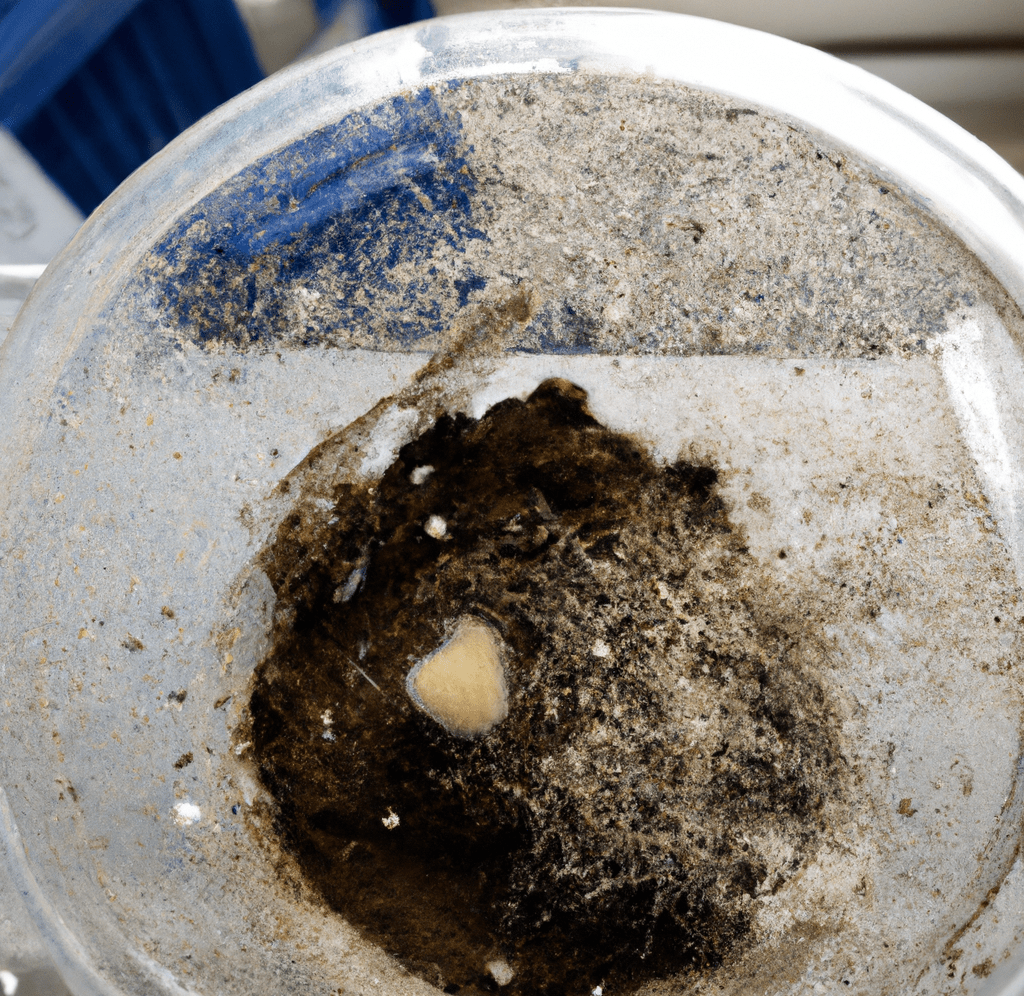
Improved Plant Tolerance to Environmental Stress
By helping plants better adapt to changing soil conditions, the role of mycorrhizae in plant growth and fertilization plays a crucial part in fostering plant tolerance to environmental stress. By increasing the root surface area and facilitating nutrient and water intake, mycorrhizae can help plants adapt to a variety of environmental stresses, including drought, salt, and heavy metal toxicity.
Mycorrhizae can improve plant water relationships during droughts, enhancing water use effectiveness and fostering plant survival. Also, mycorrhizae can enhance nutrient intake during salinity stress and aid plants in maintaining a favorable ion balance, minimizing the negative effects of salt on plant growth. Mycorrhizae can aid in the uptake and sequestration of harmful metals under heavy metal toxicity, hence lowering their accumulation in the plant tissue. The enhancement of plant adaptability to environmental stress caused by mycorrhizae has important consequences for crop output.
By encouraging plant survival and growth in areas with limited water availability, mycorrhizae can increase crop output and water usage efficiency. Mycorrhizae can assist in the growth of salt-tolerant crops on soils affected by salt, increasing crop productivity in these difficult conditions. Mycorrhizae in contaminated soils can aid in the uptake and sequestration of toxic metals in plant tissue, which can aid in the phytoremediation of polluted settings.
Reduced Use of Chemical Fertilizers
The role of mycorrhizae in plant growth and fertilization can considerably decrease the demand for artificial fertilizers in agriculture, offering a method of plant nourishment that is environmentally friendly. Plant roots can get vital nutrients, such as phosphorus, nitrogen, and other micronutrients, which are frequently scarce in the soil, by creating relationships with fungi. Particularly in maize, wheat, and rice, arbuscular mycorrhizal (AM) connections have been demonstrated to greatly minimize the demand for phosphorus fertilizers. This is because phosphorus that would otherwise be unavailable to the plant can be extracted by the fungal hyphae from the soil.
Additionally, mycorrhizal connections can boost nitrogen uptake effectiveness, lowering the demand for nitrogen fertilizers. Significant environmental advantages come from mycorrhizal associations’ reduction in the usage of chemical fertilizers. Chemical fertilizers may have detrimental effects on the biodiversity, water quality, and health of the soil. Mycorrhizal relationships can enhance ecosystem health by minimizing nutrient discharge, preserving healthy soils, and reducing their consumption. However, a number of variables, such as soil characteristics, plant species, and the kind of mycorrhizal relationship, might affect the advantages of mycorrhizal associations. For instance, certain plants might develop connections that are largely ectomycorrhizal, which might not be as successful at lowering the requirement for chemical fertilizers.
How To Use Mycorrhizae in Plant Growth and Fertilization
Now that you know more about the role of mycorrhizae in plant growth and fertilization, here’s how to use it:
- Mycorrhizae inoculation of plants: Mycorrhizae can be introduced to the soil by spore inoculation of plant roots. To do this, either commercial mycorrhizal inoculants or spores from healthy mycorrhizal soil can be used. A healthy population of mycorrhizae can be established in the soil by inoculating new plants with them.
- Keeping a Healthy Population of Mycorrhizae in the Soil: Mycorrhizae need a healthy habitat in the soil to grow. Avoid overusing chemical fertilizers and excessive tillage to preserve a healthy population of mycorrhizae in the soil. These practices can harm the fungus networks. Keeping a diversified plant community can also assist in maintaining a healthy mycorrhizal population.
- Combining Mycorrhizae with Other Fertilizers to Enhance Plant Development Mycorrhizae can be used in conjunction with other fertilizers to enhance plant growth. Mycorrhizae, for instance, can improve micronutrient uptake from organic fertilizers. Avoid overfertilizing, too, as this can harm mycorrhizal relationships.
You may maximize the advantages of these significant fungal relationships by inoculating plants with mycorrhizal spores, keeping a healthy population of mycorrhizae in the soil, and employing mycorrhizae in combination with other fertilizers.
Bottom Line: The Role of Mycorrhizae in Plant Growth and Fertilization
The role of mycorrhizae in plant growth and fertilization improves nutrient uptake and encourages plant growth in a variety of soil environments. Endomycorrhizae and ectomycorrhizae, the two most prevalent forms of mycorrhizae, create cooperative relationships with plant roots. While ectomycorrhizae surround the roots, endomycorrhizae pierce the root cells.
Mycorrhizae have the potential to be employed in a variety of crops, such as fruits, vegetables, grains, and horticulture, according to ongoing studies. For instance, research is looking into how mycorrhizae might increase soil health, decrease fertilizer input requirements, and improve crop drought resilience.
Additionally, scientists are looking into the possibility of using mycorrhizae in contaminated soils, where they might aid in the detoxification of the soil and the removal of heavy metals. Mycorrhizae are being used more and more in agriculture and horticulture, and new methods of applying and creating inoculums are being investigated. It’s also being investigated whether mycorrhizae can be used in conjunction with other soil additions like compost and charcoal. Overall, the application of mycorrhizae to plant development and fertilization offers a viable path toward horticulture and agriculture that is sustainable.
The Role of Mycorrhizae in Plant Growth and Fertilization FAQs
What is the role of mycorrhizae in plant growth and fertilization?
Because they help plants overcome soil nutrient deficits, mycorrhizae-symbiotic interactions between fungi and plant roots-are crucial for plant growth and fertilization. Mycorrhizae increase nutrient uptake and a plant’s resistance to environmental challenges like disease and drought. They also make it easier for plants to absorb nutrients, particularly phosphorus, which promotes plant growth in situations with limited resources.
How do mycorrhizae work?
Symbiotic connections between fungi and plant roots are known as mycorrhizae. This interaction allows the two species to exchange essential nutrients and minerals. The fungal hyphae that penetrate the surrounding soil past the plant roots increase the surface area available for nitrogen uptake. The plant provides the fungus with carbohydrates made during photosynthesis in exchange.
What varieties of mycorrhizae are there?
Arbuscular mycorrhizae (AM), ectomycorrhizae (ECM), ericoid mycorrhizae (ERM), and orchid mycorrhizae are a few of the several forms of mycorrhizae. The AM type is the most common and is connected to the majority of plant species. While orchid mycorrhizae are specific to orchids, ERM is associated with plants that have adapted to acidic soils, and ECM forms sheaths around the roots of plants.
What effects do various variables have on the function of mycorrhizae in plant development and fertilization?
Numerous elements, such as the pH, moisture content, and concentration of organic matter in the soil, might have an impact on the function of mycorrhizae in plant growth and fertilization. Too wet or dry soil can be detrimental to mycorrhizal connections, while soil with a pH below 5.5 can impede mycorrhizal growth. Additionally, it’s possible that the nitrogen levels in soil with little organic matter aren’t high enough to support the growth of mycorrhizae.
What distinguishes ectomycorrhizae from endomycorrhizae?
While endomycorrhizae form connections between fungus hyphae and the root cells of the host plant, ectomycorrhizae form a sheath around the surface of plant roots. Endomycorrhiza, also known as arbuscular mycorrhiza, is the most frequent type of mycorrhiza found in terrestrial habitats (AM).
What effect do mycorrhizae have on crop yield and growth?
Crop development and production can be considerably impacted by associations with mycorrhizae, especially ectomycorrhizae. According to research, grapevines with ectomycorrhizae produce more and are more resistant to environmental stress than grapevines without these connections. Similar to this, trees with ectomycorrhizae partnerships produce more wood and develop more quickly than those without them.
How do mycorrhizae improve plant root growth and nutrient uptake?
Mycorrhizae increase the surface area of the roots, facilitating easier soil nutrients and water uptake by plants. In the root cells, they also develop intricate networks of fungal hyphae that expand the surface area of the root that can absorb nutrients. Mycorrhizal relationships can promote root growth, allowing plants to explore more soil and get access to more water and nutrients.
Can mycorrhizae boost plant production and growth?
Yes, by improving nutrient intake and promoting root growth, mycorrhizae can significantly boost plant growth and productivity. Studies have shown that mycorrhizal relationships greatly increase plant growth and output in a variety of crops, including maize, wheat, soybeans, and tomatoes. On rare occasions, the yield increase has reached 30% to 40%.
Can mycorrhizae aid plants in coping with stress from the environment?
Yes, mycorrhizae increase root surface area, facilitate nutrient and water uptake, and help plants adapt to a variety of environmental challenges, such as drought, salinity, and heavy metal toxicity. Mycorrhizae can improve the efficiency of water consumption in dry conditions, nutrient uptake in salt stress, and the uptake and sequestration of toxic metals in heavy metal toxicity.
Can mycorrhizae lessen the need for synthetic fertilizers in farming?
Yes, by improving nutrient intake and reducing reliance on chemical fertilizers, which can have negative impacts on the environment, mycorrhizae can significantly reduce the demand for artificial fertilizers in agriculture. Further reducing the need for chemical inputs, mycorrhizae can improve plant resistance to environmental stressors like disease and drought.


